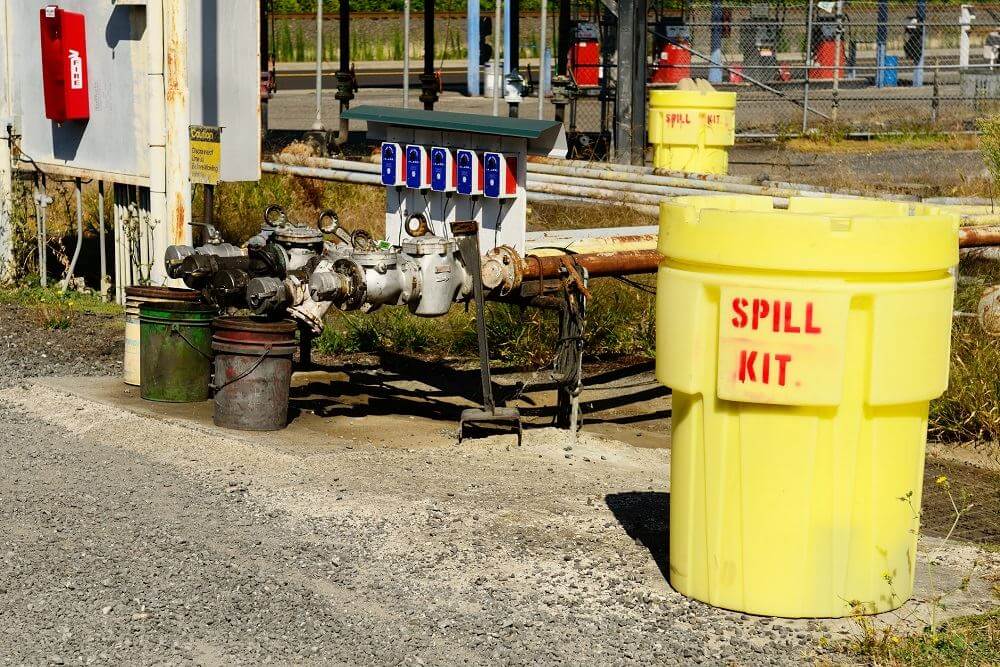Construction spills can threaten life in many ways. They can get into waterways and contaminate drinking water. They can also pollute land, threatening plants and animals. Because of this, construction sites generally craft and implement anti-spill policies to prevent these issues. This way, the spill-related hazards are reduced.
Suppose you’re assigned to address construction spills on your site. In that case, you may need to know the different ways to avoid spills and do the necessary actions if ever spills occur. Here’s an article to help you identify what could work for your spill management. Read on to know more.
1. Follow Company’s Spill Protocol
Refer to your company’s protocols in all the steps you’ll take in managing spills. This doesn’t only refer to the first responders; it also includes the step-by-step procedure to deal with the problem.
Aside from organizing the actions, the protocols also state possible alternatives appropriate to the type of spills. In addition, they show the location of spill kits and other materials you’ll use in spill management.
2. Assess The Spillage And Risks
If signs of spills have shown up, you may need to check the extent of the risks first so you may know where to start. You may refer to a disaster map to identify the possible starting points of leakage, then lock the area with some spill kits, disposal bags, and ties.
Likewise, you may identify the areas where workers might slip. If the spills could scald, you may need to remind workers of their appropriate protective clothing to minimize risks if they encounter the spill. Lastly, you can decide whether you require professional or government help to address the spill based on the signs of contamination and pollution.
3. Plug The Source Of Spill
After assessing the situation, particularly the degree of risk and damage, you may locate the sources and causes of spills. These spills come from bulk containers and pipes where the substances pass through in many cases. After finding the sources, look for punctures, cracks, or any damage where spills may have started.
You may then plug the holes or cracks with tightly fitted caps. You may also use absorbent pads to stuff the cracks that may still produce leaks despite capping the main plug. If oil drops continuously, you may use a wheelie bin to catch the dripping oil.
4. Surround The Area
Surround the affected area with absorbent cushions and pads to minimize the spill. You may need to carefully and strategically place the sorbents and pads to cover affected areas and block exit points. In this way, you can control the risks and start spill removal immediately.
You may also prepare your clean-up supplies to remove the spills instantly once their flow ceases. If the spills cover a smaller area, you may use hydrocarbon pads and a pillow. Choose products with high absorbency so they can suck up more spills and take less time to do so.
5. Remove The Spill
After containing the spill, you may start sweeping it from its side back to the center. Then, you may choose among the following materials to remove the spill quicker:
-
Sawdust
Sawdust is an organic option for making spill sweeping easier. In using sawdust, you may sprinkle it over the spill and let it settle for an hour or two. Then, gently mix the spill with the sawdust so that it will thicken.
If it has thickened enough, you may start scooping the spill using a dustpan or small container. Pour the removed spill into a tight bag that you’d tie before throwing it into a bin.
-
Cat Litter
Meanwhile, cat litter can attract the spill and keep it from flowing. However, it’s more appropriate for small spills than more serious ones. In using cat litter, you may apply it to a puddle of a spill and scoop a portion of the spill if it has already gathered at a specific point.
-
Sorbent Pads And Rolls
These cost-effective products are ideal for construction sites as they can absorb different spill types, such as soil and paint. Moreover, they can absorb large amounts of spills quickly because they are usually thicker and made from hydrophobic materials.
After sweeping the spill, you may recalibrate your preventive measures to ensure that spills won’t happen again in the future.
Wrapping Up
Managing spills on construction sites can be challenging. You may need to plan everything appropriately and use the most suitable tools and procedures to address the problem early. Fortunately, you may refer to the insights provided here to make things easy for you.
You may ask seasoned disaster management crew and safety officers for more ideas on dealing with spills and similar issues. You may also research the latest sorbent products that you may use and start by supplying the site with high-quality spill kits.

